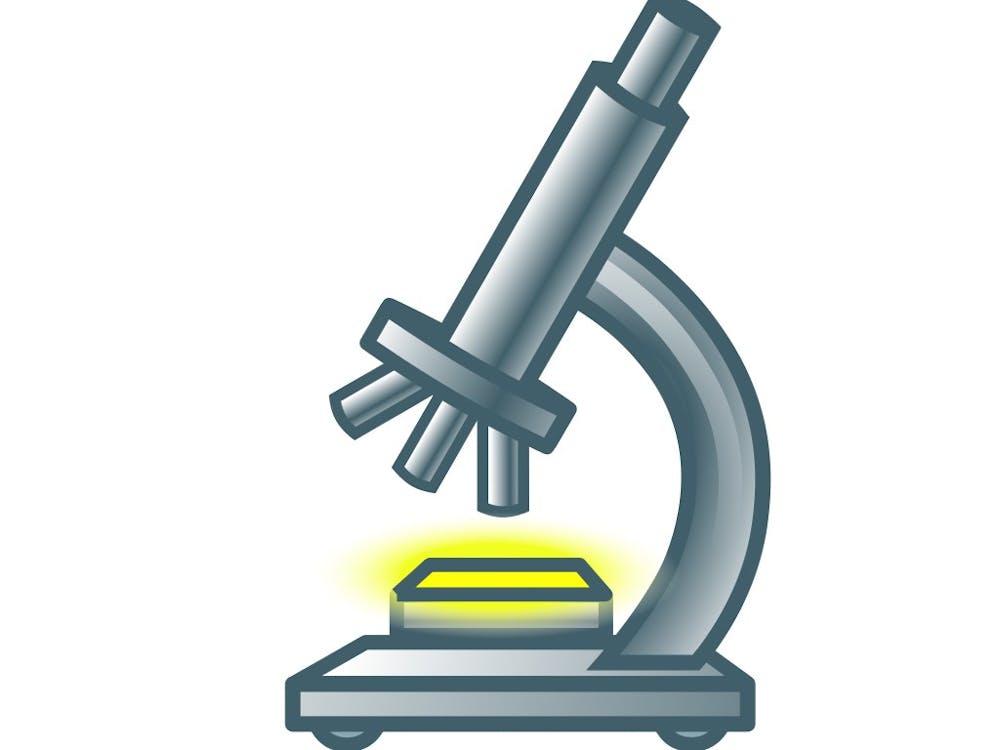It happens in a dark room on the ground floor of the French Family Science Center.
The windows are blacked out and the floor is mechanically uncoupled from the rest of the building—ensuring minimal vibration. Before Kevin Welsher begins the experiment, he makes sure that the photodetectors are isolated in complete darkness. He prepares the sample, sets the microscope up and begins data collection.
This is all part of a new 3D single-particle tracking method, which was developed by the Welsher laboratory. The procedure makes it possible to follow the interaction of single viruses with single cells in real time, giving researchers clues how the virus invades its host cell.
Welsher, a 37-year-old assistant professor of chemistry, began with a fundamental research question: “How do we analyze the behavior of a virus before it even contacts the cellular tissue?”
Although this research has been in progress since 2015, the lab recently made an important advance. The researchers designed target-locked microscopes, which allow them to monitor first contacts of virus-like particles with the cell surface in a real-time 3D tracking method.
By specifically tracking single viruses, the researchers aim to better understand the fusion and interaction between single cells and viruses.
“Our goal has been to capture the virus before it gets to the cell surface,” Welsher said.
The new microscope enables analysts to follow the moving virus at a high speed with an approach different from traditional methods.
Whether the researchers will be able to better combat the fusion of virus and cell remains a question, but “it’s down the road,” Welsher explained.
“We hope to understand that interaction better so someone else can use that information to understand how single viruses get through the cellular layer,” he said.
In the meantime, the Welsher lab will keep working on improving its methods to track single cells.
Senior Jenny Lee started working at the Welsher lab in Spring 2018 and is the only undergraduate on a team of eight. The 21-year-old chemistry major studies the composition of single viruses and solutions in the form of virus-tracking.
“We’re looking at how HIV-like particles are going to interact with cells,” she said.
A fan of animation and drawings, Welsher used the analogy of a moving car as the target object, describing it as a high-speed chase—if the virus is a car, then the microscope is a camera closely following the virus in a helicopter.
Pushing the limits of microscopy is the team’s mantra.
“Most of us are in it for the challenge,” Welsher said. “We’re all just a bunch of microscope dorks.”
Lee, who has previously worked in different labs, praised Welsher for doing a “really good job at making sure people are happy.”
Welsher joined Duke’s faculty in July 2015. At the time still a postdoctoral researcher himself, he came to the University with the intention of opening his lab. Shortly after, he placed an advertisement on a research site, and Shangguo Hou from the University of Chinese Academy of Sciences happened to be a match.
“He came directly from the airport, we had dinner, and that was the beginning of our lab,” Welsher said, recalling their first meeting.
Years later, the 32-year-old Hou—a postdoctoral associate in the lab—has not only been an author on all four published papers by the lab, but has also contributed to the invention of the 3D tracking method.
Get The Chronicle straight to your inbox
Sign up for our weekly newsletter. Cancel at any time.
“We call him the track-father,” Welsher jokingly said in a reference to “The Godfather.”
Thanks to Hou’s expertise, many of the experiments work automatically. First, the chemist preps the sample and sets up the microscope. Complete darkness ensures that the photodetectors of the microscope will not burn, and an automated software collects about an hour of data.
“When we’re running the experiment, we’re actually looking at a computer screen,” Lee said.
For the experiments to work efficiently, the lab needs to be partially detached from the rest of the building.
“This way, we can lock onto really small things with minimal vibration,” Welsher said.
Welsher’s fascination with nanoscience and materials emerged while he was a graduate student at Stanford University from 2005 to 2010. He worked most productively in the dark atmosphere that resembled the lab environment. During that time, there was a push in popularity on observing the behavior of single molecules, he said.
“But only over the last decade or two has this even been possible,” Welsher said.
Hou added that the new 3D tracking method seems to be just the beginning.
“The next step is to combine the 3D single-particle tracking method with fast 3D super resolution imaging, lighting up the environment of the tracked target particle,” he wrote in an email.
Hou said he enjoyed the challenge of working at a new lab with Welsher.
“I learned a lot from [Welsher’s] optimistic attitude towards research and life,” he said.

